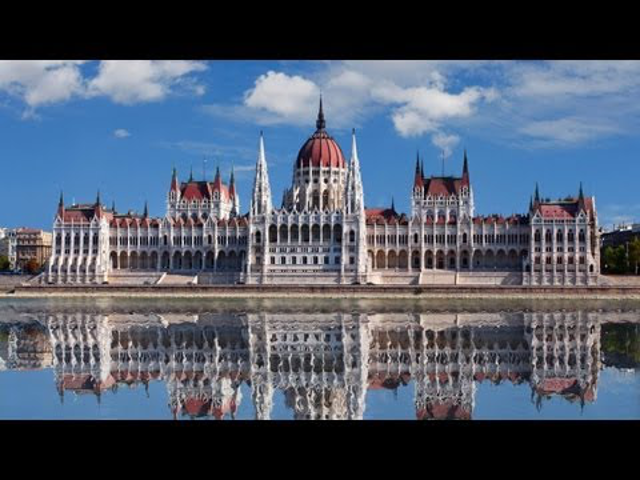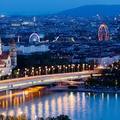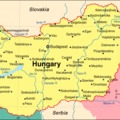Top 10 Must-See Attraction
https://checkmybudapest.blogspot.hu/2013/11/budapest-140-boldog-140-szuletesnapot.html
https://index.hu/bloghu/ingatlanvilag/2013/11/12/a_10_legszebb_foto_magyarorszagrol
FACTFILE
Hungary
Location: Central Europe, Carpathian basin, a landlocked country
Borders with: Austria (W), Slovenia (SW), Croatia (S), Serbia (S), Romania (E), Ukraine (NE), Slovakia (N)
Area: 93,000 km2 population: 10 million
Dimensions: north – south : 268km east – west: 526km
Founded: 1000 AD
Member of the European Union since 2004
Official language: Hungarian
Capital: Budapest Population: 1.7 m
Major cities: Debrecen, Győr, Miskolc, Szeged, Pécs
Administrative divisions: 19 counties
Main rivers: Danube (length in Hungary: 417km)
Tisza (length in Hungary: 596km)
Largest lake: Balaton (length: 77km, width: 14km, average depth: 3m
Highest peak: Kékes (1014m), located in the Mátra mountains
Climate: temperate
BUDAPEST lies in the northcentral part of Hungary, on the river Danube. It is a large, sprawling city. It is the administrative, business and cultural centre of Hungary. It is divided into 23 districts. With its 1.7 million inhabitants it is home to almost a fifth of the national population.
History: Strictly speaking it was founded in 1873 when Buda and Pest merged. Its history – of course – goes back much further. The Romans had an important colony, Aquincum here. The Magyars arrived nearly half a millennium later. Until the 12th century Buda and Pest were villages. In the 13th century King Béla IV built a fortress in Buda. 50 years later King Charles Robert moved the court from Visegrád to Buda. His son, King Louis the Great started to build the first royal palace. Under the Turks the two towns almost lost their population. The 1848 revolution, the Second World War and the revolution of 1956 also took their toll. Despite the turbulent centuries Budapest is an architectural gem, where there is a lot to do and see.
No visit to the Hungarian capital is complete without visiting the following attractions. Let’s start the countdown.
10. Stroll down Andrássy Avenue into Heroes Square. The avenue is lined with chic boutiques, so it might take a little longer to get to the square than you planned. Don’t shop till you drop because Heroes Square has a lot to offer. After visiting the Museum of Fine Arts (which features paintings between the 13th and 18th centuries) and the Palace of Art (or Hall of Art, which hosts temporary art exhibitions) you’ll see why Budapest is often referred to as the Paris of the East.
You cannot miss the Millenary Monument. At the base are Árpád and the other six chieftains who occupied the CarpathianBasin in the 9th century. You can see other important historical figures, like Saint Stephen, the first king of Hungary. The central pillar is topped by a statue of Archangel Gabriel.
9. Next, stroll down the street of Váci utca and admire the beautiful architecture towering over you. The street used to be the place where the rich and famous of Hungary went shopping but recently it has been flooded by tourists.
Here you can shop at designer boutiques or have an espresso at a cafe and just people-watch.
8. Our next destination is the Hungarian Parliament. This impressive building is resting along the Danube and is an example of European neo-gothic architecture. Opening in 1896 this huge building has more than 691 rooms. Make sure you see the Crown Jewels before we move on to the next attraction.
7. Chain Bridge was the first permanent bridge to connect Buda and Pest and at the time of its construction it was one of the wonders of the world. The original bridge was destroyed by the Germans in 1945 and was reconstructed in 1948. The bridge will lead you to the Castle Hill funicular. Make sure you see the illuminated bridge after dark.
6. Then visit one of the most famous music houses in Europe: the Budapest Opera House. It is considered to be the 3rd best acoustic opera sin Europe. Attend one of the shows and/or take one of the tours offered in the afternoons.
5. You can shop and eat at the Central Market Hall where fresh Hungarian ingredients are offered.
4. It is time to take a break in Budapest City Park, which was the first city park in the world. You can visit the replica of a Transylvanian castle, Vajdahunyad vára, or just take a walk or have a picnic. In winter you can ice skate on the frozen pond.
3. Next, we will visit St Stephen Cathedral, named after the first king of the country. You can still see his mummified hand next to the altar. The church is an example of neo-classical and neo-renaissance architecture. The height of the building is 96m (just like the height of the Parliament). Pay the tiny fee to climb the tower and enjoy the panoramic view of the city.
2. Visiting a spa is a great way to recharge your batteries. Budapest is packed with classic Turkish baths that date back to the 16th century.
1. And last but not least: the Buda Castle is a must. The walled castle area consists of two parts: the OldTown and the Royal Palace.






